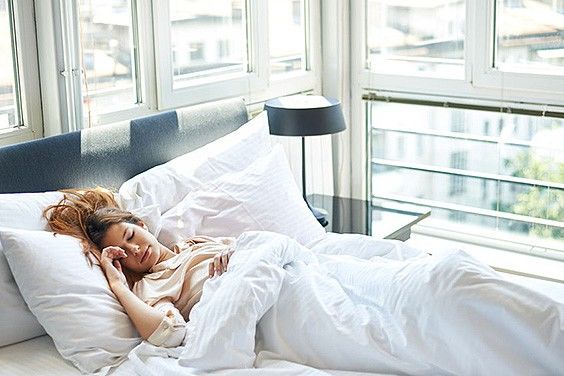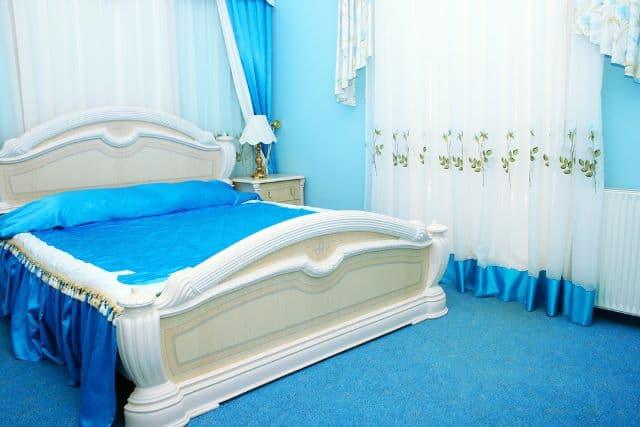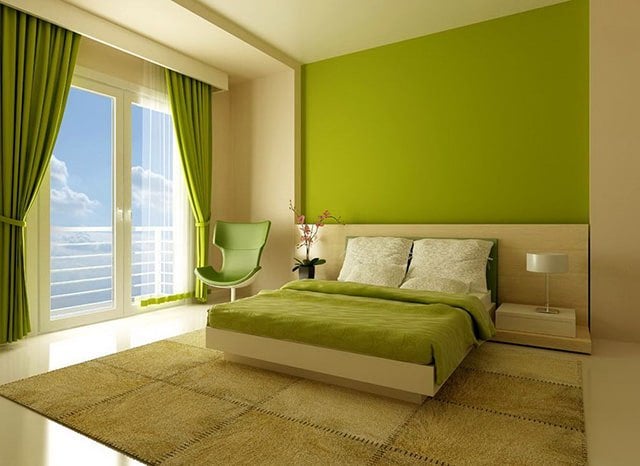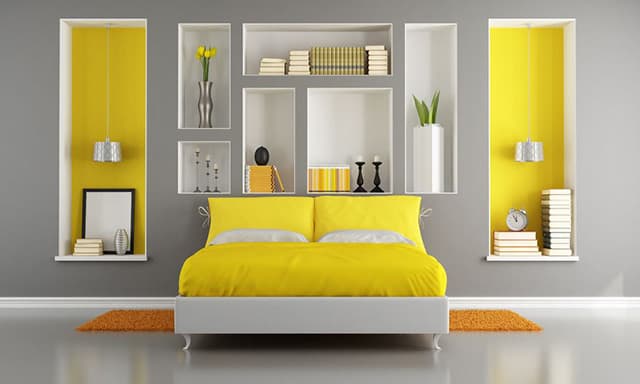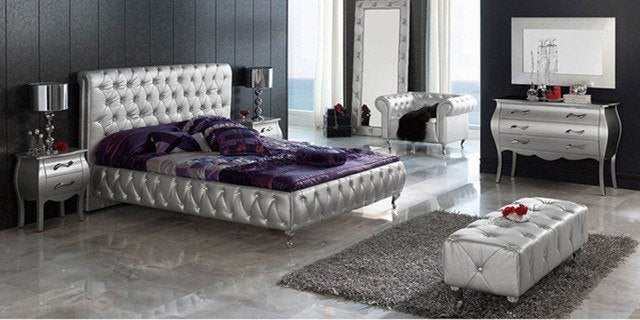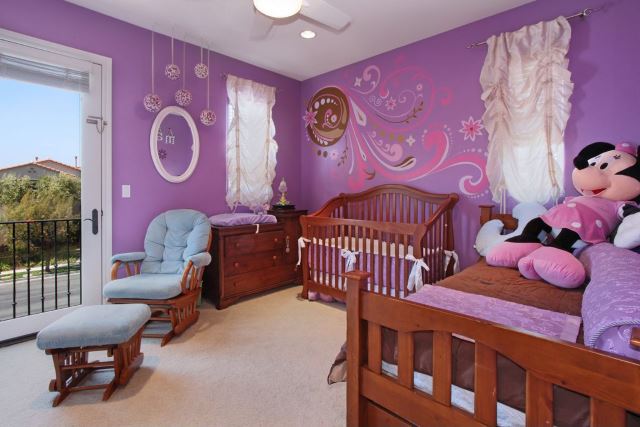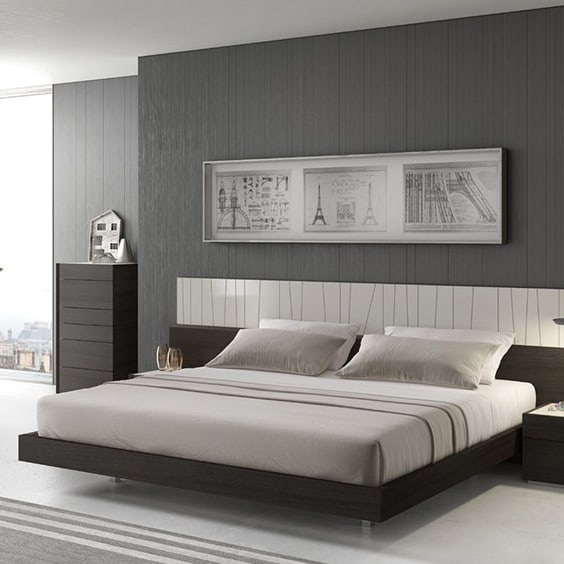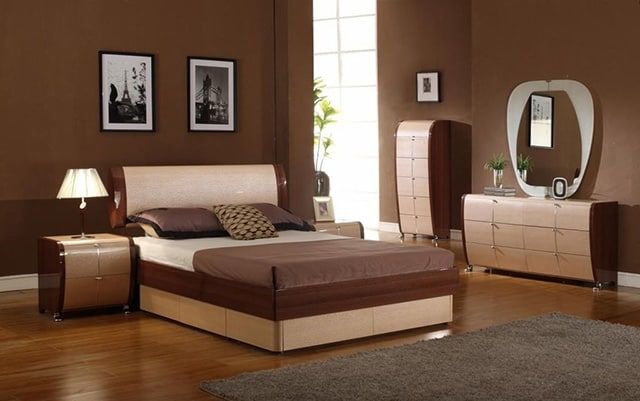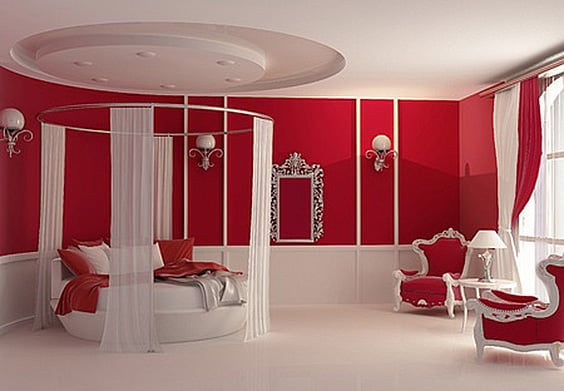A lot of people do a lot of different things when it comes to the inside of their bedrooms. They might watch television, work out, work, and more. According to the CDC, there are 50 to 70 million people who don’t sleep through the night, and it’s a growing concern because the lack of sleep can lead to health issues. A lack of sleep can cause obesity, hypertension, and can even cause driving accidents and occupational injuries and even deaths. One thing that you can do that might not seem that obvious, is to change the color of your bedroom. Certain colors can be tranquil, relaxing, and overall good for your health. Check out some of these best bedroom colors for sleep.
Why Is Sleep So Important?
You might be wondering why you need more sleep, to begin with. Why is sleep so important? You see, sleep plays an important role in your health, both physically and mentally. Your feelings, while you are awake, is directly linked to your sleep habits. During sleep, your body is working to support brain function that’s healthy. It also maintains your physical health. In kids and teens, it’s important for grown and development support. The damage that sleep deficiency does on your body can harm you over time and even lead to death due to a car or work accident. Ongoing sleep deprivation can also lead to other chronic health issues, and it can play a role in how you react, think, work, learn, and socialize with other people.
Emotional Well-Being
Sleep is one of those things that you need in order for your brain to work properly. It is preparing your brain for the day ahead and forming new ways to help you learn and remember vital information. Studies have shown that sleep deprivation can alter parts of the brain. You might have decision-making issues, issues solving problems, and problems with controlling your emotions. Children and teens who aren’t getting enough sleep might have problems socializing with others.
Physical Health
Sleep helps heal and repair your heart and blood vessels. Sleep deprivation can lead to heart disease, high blood pressure, kidney disease, diabetes, or a stroke. It can also increase the risk for obesity, as stated above. Sleep also helps maintain the balance of hormones that make you hungry or full. When you aren’t getting enough sleep, your hunger goes up, and your satiety will go down. Not only that, but your immune system depends on sleep to remain healthy.
Performance and Safety
Those who are sleep deficient are less productive during the day. It can also lead to something called microsleep. These are moments of brief sleep that occur when you are normally awake. This is something that you cannot control and may not even notice. Have you ever driven to some place and then couldn’t remember how you got there or certain parts of the trip? This is from microsleeping, and it’s dangerous. Even if you aren’t driving, it can affect you and how you function. Drowsy drivers may think that they are capable of driving when they really aren’t. Studies have shown that being sleep deficient is equal to being drunk while behind the wheel. It contributes to 100,000 car accidents per year, leading to 1,500 deaths.
Feng Shui
Before I jump right into the colors, I want to talk to you a little bit about Feng Shui. Why? Well, it has a lot to do with your energy and sleep. This is a Chinese philosophical system that has been around for more years that we can count. The meaning of it is “wind-water”. However, there are also other elements such as water, earth, metal, and fire. Colors play a vital role in Feng Shui. Different colors can affect different elements of your life.
You may be interested in: Most Relaxing Color to Paint a Bedroom.
Best Colors For Sleep
Blue
The color blue is the most common color for a bedroom. It is said to contribute to longer rest and is calm and soothing. The reason has a lot to do with your eyes. There are special receptors in your eyes called “ganglion cells”. These are the most sensitive to the color blue. These are responsible for relaying information to the part of the brain that controls your circadian rhythm. This can affect everything from your daily performance to how you physically feel during the day. The color blue is also closely associated with a feeling of calmness. When they are picked up by your ganglion cells, the information is relayed to your brain and can help reduce blood pressure and heart rate, which contributes to a good night’s sleep. Those with blue bedrooms tend to sleep for 7 hours and 52 minutes according to a British survey.
Check out some Blue Bedroom Ideas here.
Green
Green, my favorite color! Why isn’t my room green yet? You see, green is a very natural color. Not lime green or neon green, but a pastel or pale green. In terms of Feng Shui, the natural green colors represent the East, Southeast, and Southwest areas of your home. The green natural color is linked to love, marriage, positive energy, reputation, and fame. These are all very positive elements. They help you become relaxed and calm, which is best for feeling well rested in the morning.
Here are some cool Green Bedroom Ideas.
Yellow
Soft variations of the color yellow can be very soothing. This is the second best color for sleep. The sunny hue of this color can stimulate the nervous system, which encourages relaxation. Not to mention, the cheerful shade can create instant coziness and comfort.
Silver
It seems like a strange color, but people who have silver bedrooms feel that they are soothed by the metallic tones. However, they can have an unexpected side effect. One-fifth of those with silver decor said that they are more motivated to exercise in the bedroom. If this is the case, ensure that you are doing at least three hours before bedtime but not right before.
Orange
Certain shades of orange can create a warm and relaxing atmosphere. It can also aid in digestion, especially if you have just eaten a large dinner. This color can help warm and relax your muscles as well, which is vital for getting a good night’s rest.
The Worst Colors For Sleep
Yes, there are colors that you should absolutely avoid, and I want to fill you in on them!
Purple
Those who have purple bedrooms are the least rested out of everybody. Well, that would explain a lot to me since my bedroom is lavender! I hardly get any sleep. Those who have this color room on average get only five to six hours per sleep per night. Yup, that sounds about right. The color is very rich and it can make it difficult to settle down after a long day. It can also cause nightmares and vivid dreams.
Gray
It might not be as bold as purple, but it has the ability to make people feel depressed and can uninspire. Those who have a gray bedroom say that they only sleep 6 hours per night. Surveys have also shown that those with this color bedroom spend most of their time shopping online in bed instead of sleeping.
Brown
Brown is gloomy and sad, and it’s anything but cozy. It also tends to create a sense of restlessness as well. It can also make people feel isolated and uncomfortable. Not to mention, it’s ugly.
Red
This is a passionate and energetic color that can increase your blood pressure. It can also make you want to move faster. None of these are things that you want to feel while trying to go to sleep. This color is also the worst for romance.
White or Cream
If you’re a workaholic, then you aren’t going to want to paint your room white. Those with a white or cream room tend to take their work to the bedroom with them, generally three times per week if you have a job that allows you to do so.
Other Considerations
No matter what color you choose that is going to help you get some sleep, make sure that it is light, pastel, or muted shades. IF they are neutral-earth or skin-based tones, they are calming and can promote positive energy flow. A color that is too bold can stimulate your mind, creating a sense of alertness rather than relaxation.
You should also remember to use flat paint. Don’t use something that is going to reflect, such as an eggshell or glossy finish. Use flatter paints that absorb more color and have a softer feel.
You may want to read: What is the Best Bedroom Paint Colors for Sleeping?
Conclusion
So there you have it, some of the best and worst colors to paint your bedroom. Remember, it’s not always about the color either. You should ensure that your mattress is comfortable as well. If you are sleeping on something that is lumpy and uncomfortable, it can contribute to less sleep and comfort. If you follow the guidelines above and check out the Feng Shui article, you can learn so much about how you are sleeping and how you should be sleeping and how your room should be decorated to ensure you are getting the most restful sleep possible.
